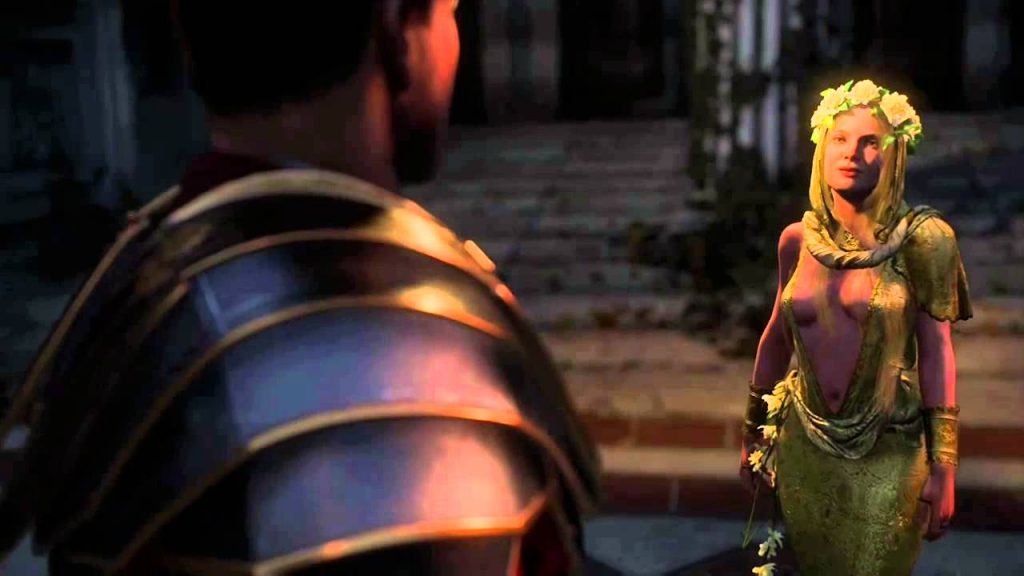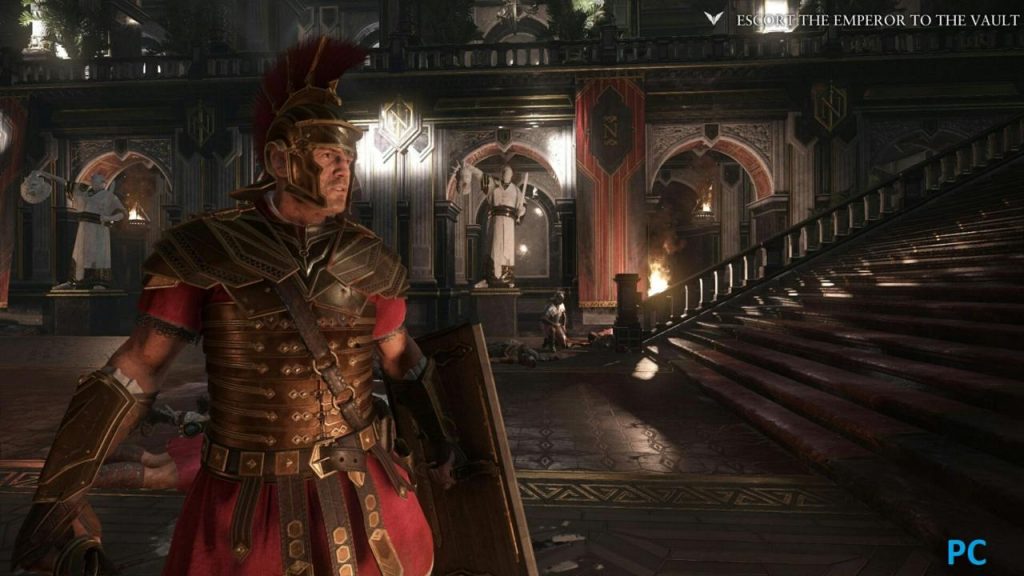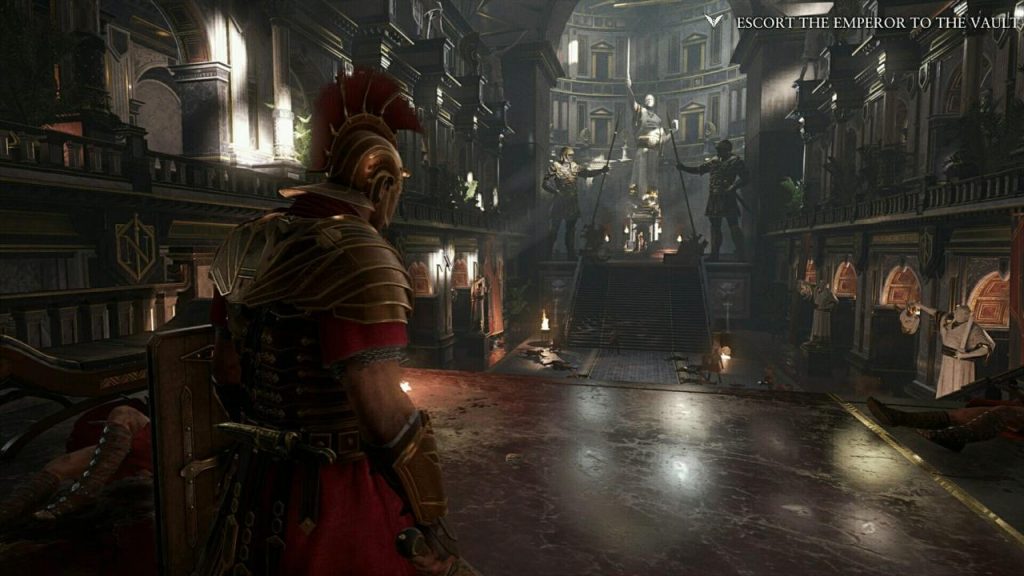It should have been a scene of remorse and tragic grandeur. Marius Titus, the muscular hero of Xbox One launch title Ryse: Son of Rome, has just discovered his family slaughtered in their home – victims of the Emperor Nero and his paranoid bloodlust.
As our hero contemplates his loss, a goddess appears to him, promising the chance for retribution. But for many gamers it seems her words of solace and encouragement have gone unnoticed, thanks to a distracting presence.
“The breast physics on Ryse,” writes Patricia Hernandez on US games site, Kotaku. “I don’t even know what is going on there.”

Sadly, this is only the latest example in a long and shameful history of implausible breast modelling in video games. In the early days, with famously licentious character designs such as Mai Shiranui from the fighting game Fatal Fury, “jiggle” was attained through hand-drawn frames of animation. Later, as 3D polygonal character models replaced 2D sprites, designers started to experiment with physics, adding mass and applying softbody dynamics.
The results could “best” be seen in Tecmo’s Dead or Alive series of female-dominated fighting games, which later spawned the horrendous DOA: Beach Volleyball titles – essentially a wretched collection of soft porn fantasies masquerading as sports sims. Here, the helium-like breast physics was such a central element of the experience, players could often customise the jiggle settings.
“In Japanese animation, they have a concept of ‘fan service’, in which artists draw popular female characters in suggestive poses and clothing to appease demand,” says Dom Clubb, artistic director at Jonathan Ross’ Hot Sauce studio. “It’s a part of that culture. It’s something we’re much more cautious about here.”

Indeed, more recently, the industry has somewhat matured, both in its approach to character animation, and in its depiction of female characters – hence the evolution of Lara Croft, from ridiculously proportioned lad’s mag starlet in the nineties, to this year’s complex and convincing characterisation. Earlier this year, meanwhile, the writer Jenn Frank set up the Boobjam game design competition, calling for games that reclaimed and demystified breasts.
Developers are now being asked to justify the depiction of sexualised female characters in their games. Recently, when PC games site Rock Paper Shotgun asked why the women in Blizzard’s Heroes of the Storm game were so scantily clad, the developer dodged the question entirely, before later apologising for dismissing the issue. “It takes work to make compelling characters, but it’s important to take a step back to ensure that we’re not alienating our players,” he wrote.
‘Physics simulation for breasts is quite expensive’
In some senses, the maturation of the games industry is working together with an acknowledgement that this is just a really tricky physical element to get right. “The methodology is actually very similar to simulating the look of body fat,” says Stewart Jones, an experienced animator who has worked in both film and games.
“You create a skeleton out of around 15 joints and then add a couple extra that sit in front of the chest area – these would then have motion applied by the spline joints and driven by dynamic code. Most of the issues tend to come from not properly tightening up all the inputs you have under those physics-based objects.”

But for most game developers, this is just too much effort and time for what is usually just a cheap piece of titillation. “One issue is that running a physics simulation just for breasts is quite expensive in terms of processing load, for what’s probably a relatively small part of the overall scene,” says Paul Abbott, a veteran art director, now at Brighton’s Wish Studios.
“At one place I worked, the breast physics went totally out of control. We put the game on a ‘soak test’ – where we’d leave it running overnight to see if it remained stable. When we came back in the morning the breasts were literally as big as the entire world.”
As for Ryse, the sequence is comparatively subtle, but in a world of rich convincing realism, it looks all the more absurd – a body-centric variation on the Uncanny Valley theory. Clubb thinks the sequence shows a team making short cuts to meet a tight deadline. “A character mesh is made up of thousands of vertices. When the physics system is applied, each vertex is given a value – lets say 0-1 – depending on how much the artist wants the particular vertex to be affected by physics.
“This will make the cloth vertices sway and the flesh vertices stay rigid. But because Ryse was probably rushed to make the Xbox One launch, I’m guessing the character was given a single physics system for the whole mesh rather than one for skin and a separate one for cloth. If you were to do the physics properly, there are lots of parameters to deal with, like stiffness, sway and stretch, and the cloth on the breasts would have to deform separately. That would have been a computational nightmare.”
‘This is supposed to be a moment of emotional gravity’
Really though, this probably isn’t a question of technology or technique, it’s one of taste and awareness of wider issues. Right now, the difficulties with representing the female body are an ironic metaphor for the industry’s awkward gender politics. Yet as character models increase in visual complexity, and as game narratives mature, the issue of authentic physicality is one developers will need to face. Perhaps one day there will a game that deals in the sensual or even just the non-sexualised physical reality of nudity, rather than in exploitation.
But that day is not here, and Ryse, with its simple story of gore and conquest, is not the game. “I think it was a bad decision to have her in those clothes,” says Clubb finally. “This is supposed to be a moment of emotional gravity. Just dress the character.”

